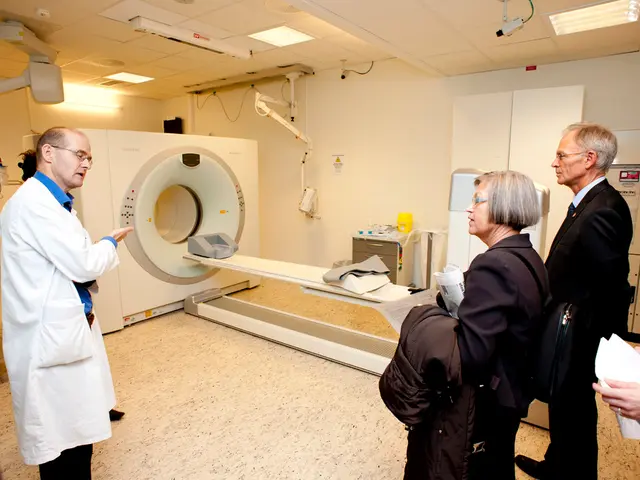Nursing Home Care Quality: Regional Discrepancies and Solutions in Germany
Substantial quality variations in care provision persist across regional nursing homes - Significant Variations in Home Care Quality Across Regions
Troubling issues persist with long-term prescriptions of sedatives and sleep aids for nursing home residents across the nation. Medicines like benzodiazepines may offer temporary relief with their calming and anxiety-reducing effects, but prolonged use can lead to dependency, increased fall risks, and worsening mental health conditions.
In 2023, 7.14% of nursing home residents in Germany received long-term prescriptions of such medications, a slight decrease from the previous year. Yet, a substantial disparity exists between regions, with high-risk prescriptions considerably more common in the western regions. For instance, Saarland saw a troubling 15.88% of its nursing home population on such medications, while the eastern Saxony-Anhalt only had 2.9% of its population on these potentially hazardous prescriptions.
Another alarming finding is the neglect of diabetes care. Over 79% of residents did not receive proper eye care in 2023, with some southern regions, like Baden-Württemberg, Hesse, Rhineland-Palatinate, and Bavaria facing the brunt of this issue. Thankfully, the situation appears brighter in cities like Berlin, Hamburg, Mecklenburg-Vorpommern, Saxony, North Rhine-Westphalia, and Schleswig-Holstein.
To better understand the situation, researchers analyzed data from around 350,000 nursing home residents aged 60 and above insured by the eleven AOK regional associations covering a third of the German population.
The study also revealed a concerning correlation between certain medications and an elevated fall risk for older and unwell individuals. One-sixth of residents receiving such medications in nursing homes were hospitalized due to falls, with Rhineland-Palatinate having a shocking 18.45% rate. The picture looks much healthier in Mecklenburg-Vorpommern, with only 13% of residents falling into this category.
Regional healthcare policies, the availability of specialized services, and funding from insurers like AOK are key factors impacting the quality of care in nursing homes. Initiatives like telerehabilitation services, digital health tools, and interprofessional collaboration projects hold the promise of improving the overall quality of care and reducing regional disparities.
By focusing on these strategies, Germany's healthcare system can ensure that nursing home residents receive the highest quality of care, regardless of their geographical location. Improved medication management, advanced diabetes care, and reduced fall risks can all be achievable goals with the right resources and support.
- Pflege
- Germany
- Berlin
- AOK
- Rhineland-Palatinate
- Mecklenburg-Vorpommern
Enrichment Data:- Berlin: Being a hub for healthcare innovation, Berlin boasts institutions like Charité Berlin collaborating on cutting-edge programs, which can enhance nursing home care through access to advanced medical research and technology.
- Rhineland-Palatinate: Despite lacking specific data on Rhineland-Palatinate's nursing home care quality, the region benefits from Germany's overall strong healthcare system. Federal policies encouraging telerehabilitation services may improve care accessibility in this area.
- Mecklenburg-Vorpommern: Challenged by rural-urban disparities and staffing shortages, this region can leverage initiatives promoting digital health to bridge gaps in care quality.
- Saarland: Studies like the SaarPHIR project emphasize the importance of interprofessional collaboration, reducing hospitalizations and enhancing care quality in regions like Saarland, which have been a focus for healthcare innovation.
- AOK, a leading statutory health insurer in Germany, plays a significant role in funding and supporting healthcare services, including nursing homes, through initiatives like telerehabilitation and other digital health initiatives.
- The increasing number of people receiving care in the home, a trend indicative of health-and-wellness and home-based nursing solutions, can potentially benefit from advanced medical research and technology, as exemplified by institutions like Charité Berlin in Berlin, Germany.
- In Rhineland-Palatinate, where a high fall risk among nursing home residents is apparent, science could play a pivotal role in reducing these risks through Federal policies encouraging telerehabilitation services, a strategy that enhances care accessibility and quality.
- Notably, Mecklenburg-Vorpommern, a region challenged by rural-urban disparities and staffing shortages in nursing homes, can utilize digital health tools and initiatives to bridge gaps in care quality and achieve parity with regions like Berlin, which have thrived in embracing healthcare innovation.







